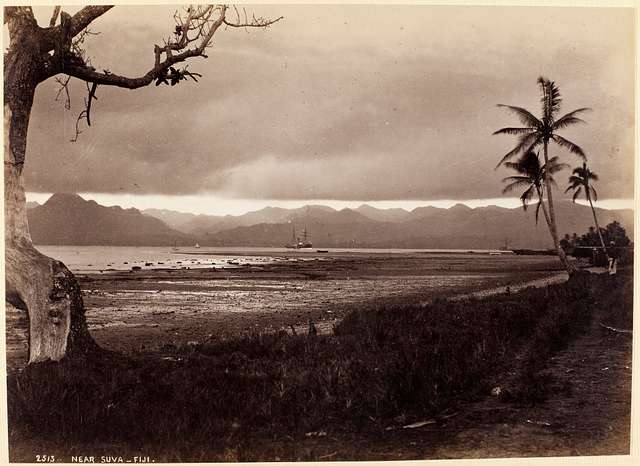Summary | Excerpt | Reading Guide | Reviews | Beyond the Book | Read-Alikes | Genres & Themes | Author Bio

This article relates to A Disappearance in Fiji
 The country and archipelago of Fiji is in the South Pacific Ocean, approximately 1,300 miles north of Auckland, New Zealand and 2700 miles southwest of Hawaii. It consists of more than 300 islands, about 100 of which are inhabited. The largest island, at approximately 66 miles long and 91 miles wide, is Viti Levu, or "Great Fiji." The country's capital of Suva—where part of the action takes place in Nilima Rao's novel A Disappearance in Fiji—is located on its southeast coast.
The country and archipelago of Fiji is in the South Pacific Ocean, approximately 1,300 miles north of Auckland, New Zealand and 2700 miles southwest of Hawaii. It consists of more than 300 islands, about 100 of which are inhabited. The largest island, at approximately 66 miles long and 91 miles wide, is Viti Levu, or "Great Fiji." The country's capital of Suva—where part of the action takes place in Nilima Rao's novel A Disappearance in Fiji—is located on its southeast coast.
At the time of the novel's events—1914—Fiji had been a British Crown Colony for 40 years. A conducive climate for such high-demand products as cotton, tea and sugar made it an initially attractive target for planters looking to raise cash crops. However, at the time of British annexation, commodity prices were in a depression as America began to pump cotton back into world trade, sugar beet production rose in Europe and Asia cornered the market on tea.
Imported "coolie" labor from India (also a British colony) started as a way of getting around this in 1878. As Rao evocatively describes in her novel, immigrants came to Fiji with "onerous contracts" that undercut local labor. Their situation was nothing more than indentured servitude. More than 60,000 Indians were recruited to work the sugarcane plantations in Fiji during this period, usually for a five-year "contract." As author Rajendra Prasad explains in an article for Himal Southasian, many Indians were recruited under false pretenses and outright lies about "the riches that awaited them in Fiji."
The system they labored under was known as "Girmit" (which came from the English word "agreement") and the workers as "Girmitiyas." According to Prasad, once in Fiji, laborers realized "that their freedom was lost. None could escape. Those who resisted were kept in isolation without food or intimidated into submission."
While indentured servitude in Fiji was outlawed in 1917, many Indians never returned home. In this way, the workers of the Girmit system contributed to the growth of the country's population and created new ethnic complexities that continued into its independence in 1970 and beyond. Today, Fiji has a varied cultural heritage, with backgrounds including Indian, Fijian, Chinese and European.
Albumen silver print photo of landscape near Suja, Fiji in 1884 by Burton Brothers, via Museum of New Zealand
Filed under Places, Cultures & Identities
![]() This "beyond the book article" relates to A Disappearance in Fiji. It originally ran in June 2023 and has been updated for the
May 2024 paperback edition.
Go to magazine.
This "beyond the book article" relates to A Disappearance in Fiji. It originally ran in June 2023 and has been updated for the
May 2024 paperback edition.
Go to magazine.
Analyzing humor is like dissecting a frog. Few people are interested and the frog dies of it.
Click Here to find out who said this, as well as discovering other famous literary quotes!
Your guide toexceptional books
BookBrowse seeks out and recommends the best in contemporary fiction and nonfiction—books that not only engage and entertain but also deepen our understanding of ourselves and the world around us.